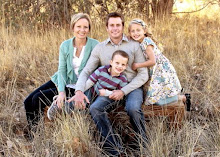This place was extremely impressive to me because you could see how intricate the carvings were in the buildings, and it has been very well restored. It was also so awesome because it was the only place where they actually let you hike up to the top of the temple.
Entering into Ek Balam. This is the first building we climbed, and were able to walk inside a bit.
You can see the staircase inside. These buildings have many passage ways in them.
When they were forced to abandon, they would close up all the doorways into them, like above.
From atop the first temple, looking inside of Ek Balam. The tall building in the distance is the main temple, and the most impressive.
The restoration was amazing here. Very intricate!
Ready for our hike up to the top!
Climbing the 107 steps of the main temple and they were extremely steep!!!
The entrance to the main temple, which was off to the side, about half way up the giant staircase. This place was roped off, but it was beyond unbelievable! For members of the Church of Jesus Christ of Latter-Day Saints, it is for sure a sight to see and nearly unimaginable...but I dare not explain too much of what I saw. :) You will have to go see for yourselves!
The Jaguar mask
This was on the wall in the entryway into the temple. Our tour guide explained it as Jesus Christ as the white person in the middle, teaching the Lamanites around him. After everything we'd already seen at Chichen Itza that day and now Ek Balam, there is not one bit of me that doubts that our tour guide is correct.
This picture is actually from Chichen Itza, but it kind of goes along with the above photo I took at Ek Balam (and I forgot to post it on the Chichen Itza story). This is just a picture of a photo our tour guide had. It is a photo he had taken of the inside of one of the temples at Chichen Itza (when they used to let you enter them). It is inside the walls of a temple, therefore the colors are all intact. If you look closely you can see dark men and light men. The light-colored men are slaves and working for the dark-colored men, just as the Nephites were in bondage to the Lamanites.
At the entrance to the main temple.

Part of the exterior entrance to the main temple.
From atop the main temple. The first temple we hiked is the one in the distance in this picture!
The temples of Ek Balam are behind us in the distance. This is taken atop the main temple there.
On our way down...look how steep!!
This is part of the "football" stadium in Ek Balam. It is a miniature version of the one we saw at Chichen Itza, but we were able to climb around on it. Tyson is standing where the goals had to be made. There were stone rings hooked into these walls at one point that the teams ball had to get through to score.
A baptismal font at the bottom of the main temple.
The Mayan Arch
We found ourselves some Lamanites on the way out of the jungle. :)











































